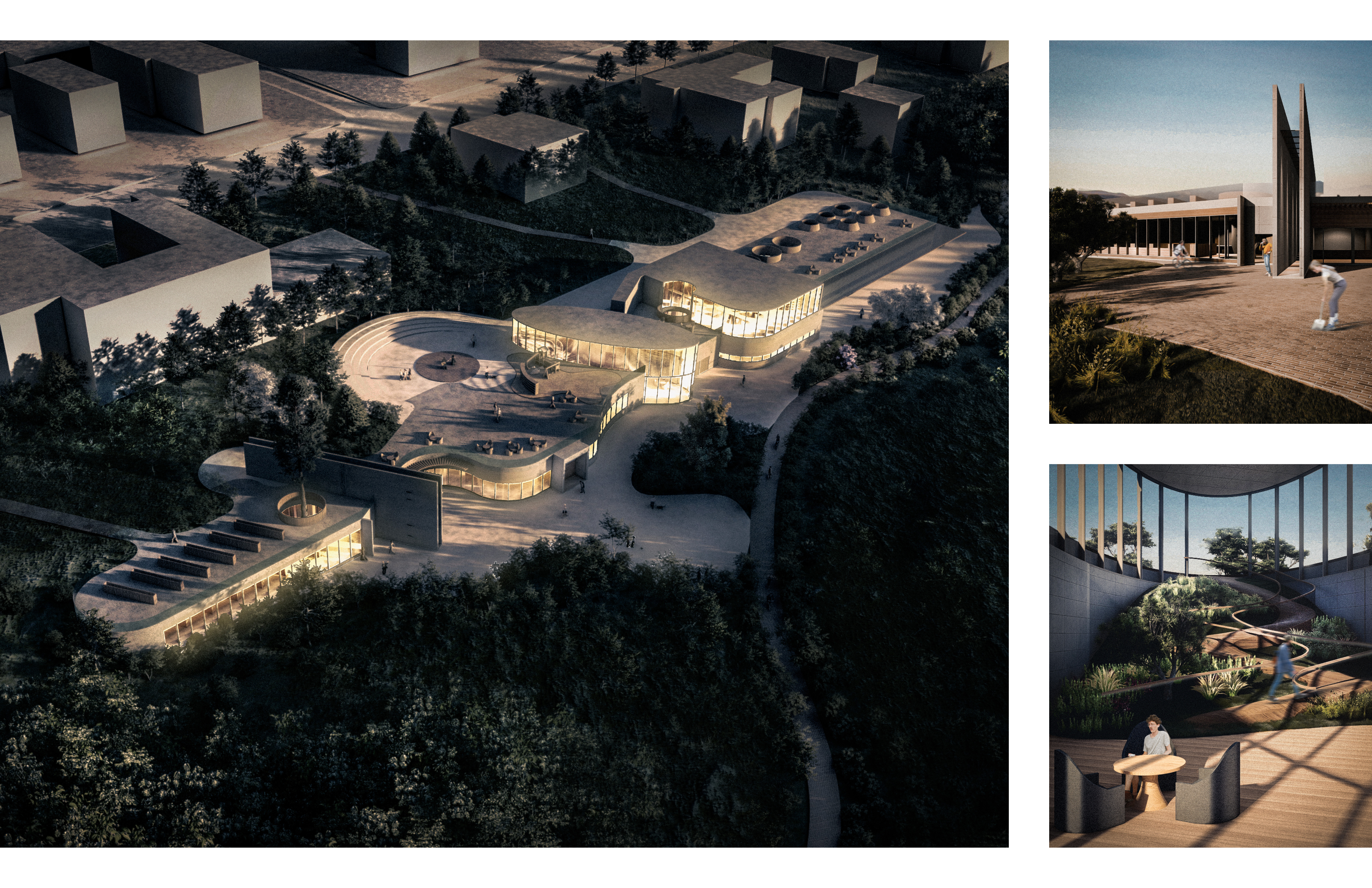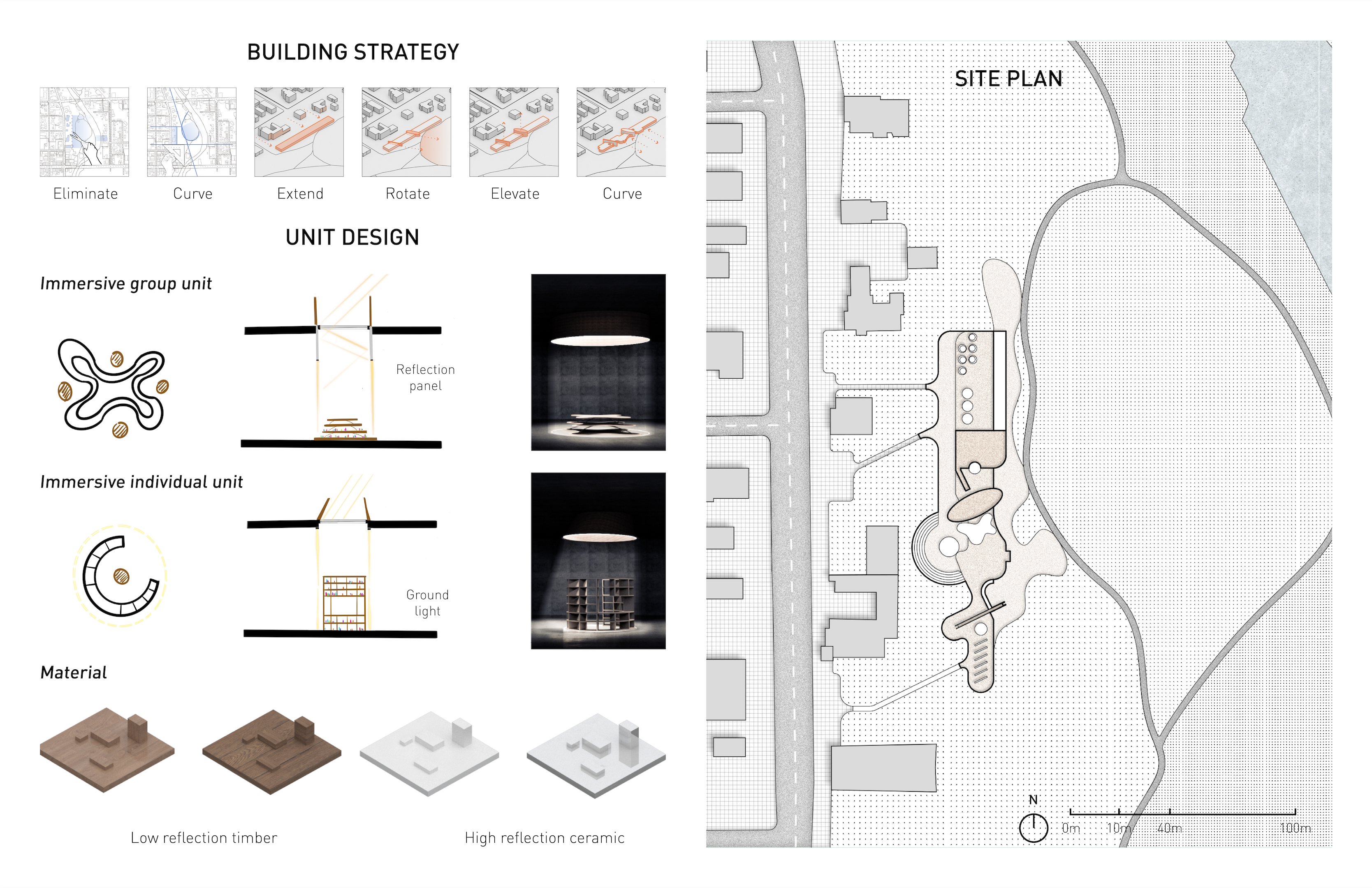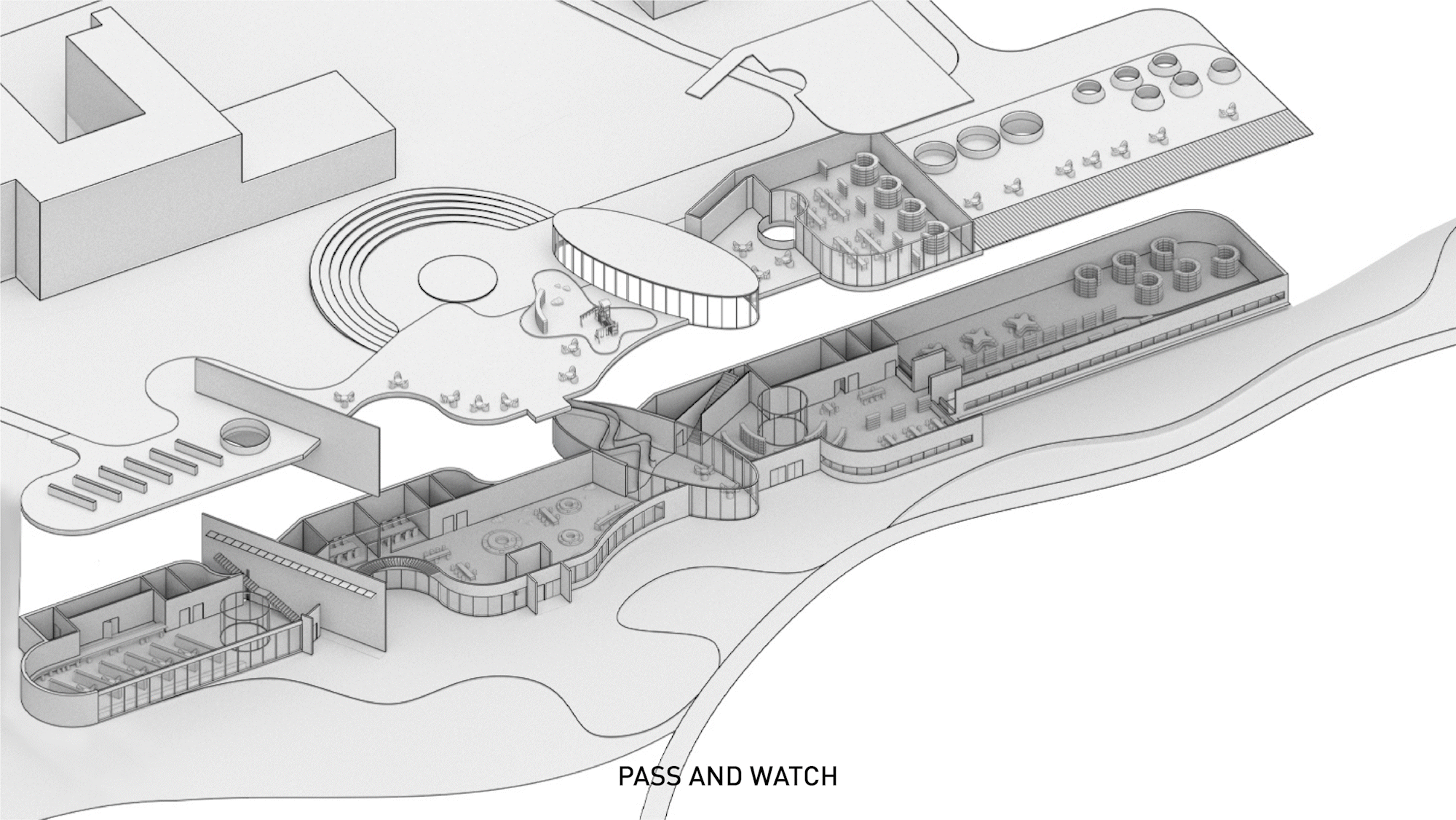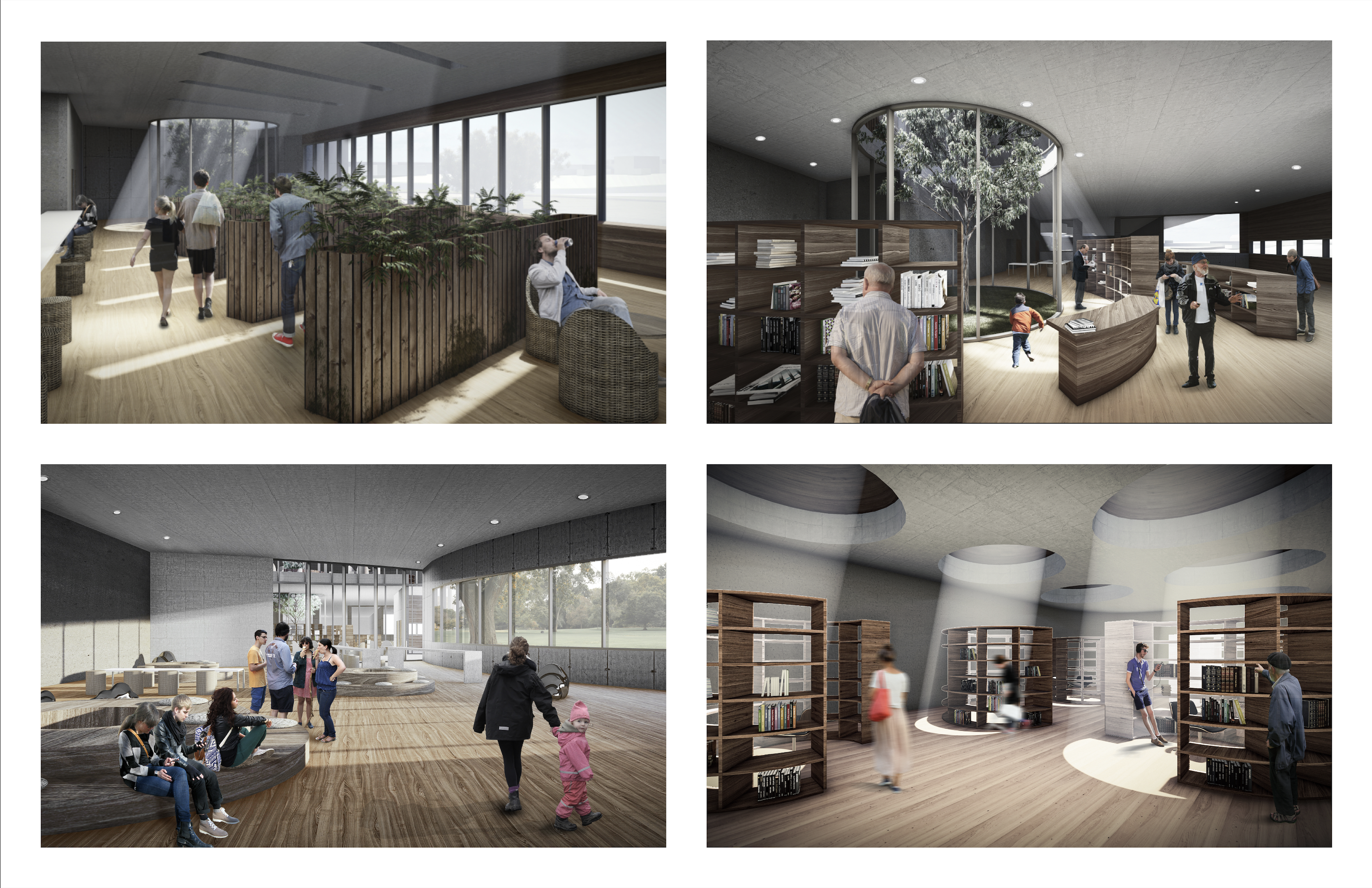PROFESSOR
PETER HALQUIST
STUDIO
MAKING SENSE
The “sympathetic library”, where architecture seeks attunement with the audience, is the focus of this studio. To this end we turned, and returned, to this simple notion: that the built-environment we inhabit profoundly influences how we feel, which in turn influences how we act.
Every one of us has felt discomfort in a public space before. Whether we found that space too loud or too quiet, too bright or too dark, too spacious or too cramped, too hot or too cold. While these simple dichotomies fail to capture the nuances of spatial experience–nor do they give insight into how we reach these conclusions–they can nonetheless inform how we begin to think about how our surroundings affect us. This studio proposes that the future of the public library depends more on how people feel about spending time in that space, and less on what information wone has access to therin. For centuries, architects have manipulated sensorial properties of space such as texture, form, light, acoustics, and atmosphere, but there is much contemporary insight into these relationships that has yet to be incorperated into how we shape space.
The ideas which inform the work of the studio are based on current research and insight in fields such as: environmental psychology, spatial cognition, psychophysiology, psychogeography, disability theory, neuroscience, and evolutionary biology. Participants in this studio chose specific topics and areas of interest upon which to conceptually root thier designs.
︎︎︎BACK ︎
JULIA MCMORROUGH
Elliot Smithberger
Ruiying Zhang
MATIAS DEL CAMPO
Dowdle, Ibrahim, Zhang Fahmy, Kamhawi, Pandey
IAN DONALDSON
Gort-Cabeza de Vaca
Anahita Mojahed
DAWN GILPIN
Sang Won Kang
Xin Li
PETER HALQUIST
Chung-Han (Joanne)
Chengdai Yang
PERRY KULPER
Ghassan Alserayhi
Eilís Finnegan
ANN LUI
Will Kirsch
Kendra Soler
STEVEN MANKOUCHE
Stephen Corcoran
Aric Reed
NEAL ROBINSON
Connor Tuthill
Eduardo Villamor
JON RULE
Richard Hua
Qianwei Zhang
CHRISTIAN UNVERZAGT
Siyuan (Elaine) Cheng
Vance Smith Jr
KATHY VELIKOV
Emma Powers
Brian Smith
STUDENT WORK
CHENDAI YANG
“BECOMING PUBLIC”
The project focuses on open attributes and new spatial separation in public buildings. Are there new means to make libraries, as iconic objects in public buildings, more open spaces? In the design, human psychology and feelings become important spatial design elements; how to use the illusion of human mind to make the space separated, how to make people feel comfortable and safe while reading, how to avoid the obstruction of solid wall surface on spatial mobility to create more open spaces are the main research direction. Also, the combination of spatial integrity and visual illusion allows for more diverse programs to be incorporated into the building, making the building part of the community.









